Beginners Guides
TV Refresh Rates – Is the Highest Always the Best?

TV refresh rates have been a hot topic lately, with manufacturers touting higher and higher numbers. But is the highest always the best?
There’s no denying that a high refresh rate can make a difference, especially in fast-paced action scenes. A higher refresh rate means that each image is on screen for a shorter amount of time, making them less likely to blur together. This can be especially helpful if you’re susceptible to motion sickness or migraines.
However, it’s important to remember that most content is not filmed at a high frame rate. Most TV shows and movies are filmed at 24 frames per second. That means that even if your TV has a refresh rate of 120Hz, it will only make a difference on a small portion of the content you watch.
So if you’re debating whether to upgrade to a higher refresh rate TV, ask yourself how much fast-paced content you watch. If you’re mostly watching dramas or sitcoms, you might not notice much of a difference. But it could be worth the investment if you’re a big fan of action movies or sports.
TV Refresh Rates – Is the Highest Always the Best?
Choosing a television requires some knowledge of refresh rates and how they work. There are two refresh rates: the ‘Native’ and the ‘Highest.’ This article will look at the native rate and the ‘Interpolation’ technique. In addition, we’ll look at how a TV can display the ‘Highest’ refresh rate while preserving a native one.
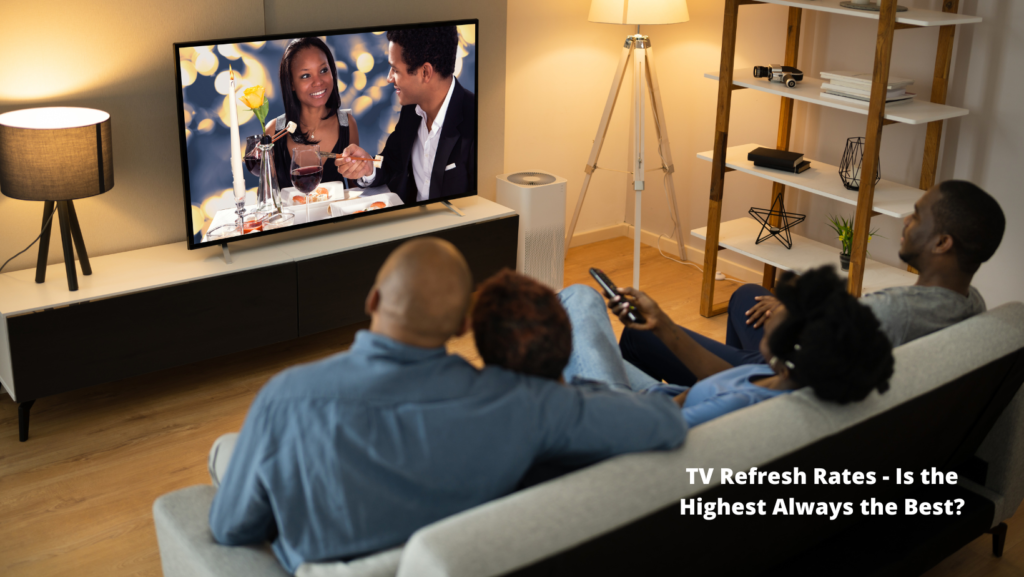
‘Native’ Refresh Rate
You may be wondering what ‘Native’ TV refresh rate means. This refers to the actual refresh rate of the device. Also known as real refresh rate, this figure compares different TV models. Generally speaking, the refresh rate of a TV panel refers to the rate at which the device is processing video signals from a video source. Video sources include Blu-ray players, game consoles, cable or satellite boxes, and even televisions.
Typically, televisions are sent out at a frame rate of 24-30 frames per second (fps). However, this doesn’t mean that a high refresh rate will improve the quality of your viewing. While a 120Hz refresh rate will not make your television look better, it will enhance your viewing experience if you watch TV programs broadcast in NTSC.
You can improve your viewing experience by choosing a TV with an effective refresh rate, which refreshes the image at a lower rate but may appear to have a similar motion resolution to a high-fps television.
‘Native’ TV refresh rate refers to the refresh rate at which the images are updated on a screen. While some manufacturers may claim that their televisions can refresh at 120 Hz, this is just marketing hype. While 120 Hz is better than 60 Hz, you must also consider the frequency of content you watch. The higher refresh rate will result in smoother images, but you may never notice the difference between 60 Hz and 120 Hz.
‘Native’ TVs have a higher refresh rate, allowing you to enjoy more HD content. But ‘Native’ TVs also have better contrast. That’s why the ‘Native’ TVs have better contrast. A higher refresh rate will reduce flickering, which is an unwelcome feature. For that matter, higher refresh rates are only valid for watching fast-paced videos.
Motion blur can be resolved by using different levels of motion processing. Some TVs allow you to set the amount of motion processing applied to images, while others have just one setting. A higher refresh rate can make these techniques more effective. However, it can be challenging to determine whether the motion blur effect is worth it. And that’s a topic for another article. And until we get more information, we’ll continue to update this article.
‘Interpolation’ Technique
Using the ‘Interpolation’ technique, TV manufacturers can display content at higher refresh rates than they can with the traditional method of interlacing frames. However, this technique has disadvantages and can cause visual anomalies. If your TV uses the ‘Interpolation’ technique, you may find the picture to become blurry and appear as though it is moving faster than it is.
The ‘Interpolation’ technique allows the refresh rate of a television to be increased by doubling the number of frames. This technique is more common in modern TVs than ever, thanks to more powerful processors and large amounts of memory. Interpolation creates a new frame based on the average pixel positions in the previous frame. The ‘Interpolation’ technique can also lead to soap opera-like effects.
A common problem in video content is the flickering of the screen when there are several frames between each other. Many TV manufacturers employ the ‘black frame’ technique to remedy this. The black frames are inserted between the frames to avoid judder and improve the appearance of blurred motion. This technique is still not perfect, however, and it has disadvantages. It can also cause ghosting, which can be jarring.
LCDs have higher refresh rates so they can add new frames between original ones.
Modern TVs can guess what happened in between two frames. The new structures are a hybrid of the frame before and after. It’s possible to get this technique to work at 30FPS or 60FPS and 120FPS or higher. However, you’ll need to know your screen’s resolution before attempting to watch a movie at a high refresh rate.
Refresh rates vary from manufacturer to manufacturer. Some TV manufacturers call their frames ‘effective’ while others use fancy-sounding branded names such as Clear Motion. Fortunately, this knowledge of TV refresh rates is transferable from model to brand. This article explores the technical aspects of TV refresh rates. It may save your time and money in the long run. Just remember that higher refresh rates aren’t always better.
‘Highest’ Refresh Rate
You may be confused when you see the word ‘Highest’ printed on a television label. There are several ways to interpret these numbers. You can either use the term refresh rate or ‘frame rate’ to determine the refresh rate of the TV.
However, remember that TV manufacturers often mask these numbers with obscure terms or by leaving blank fields on the label. In any case, it’s best to look for a more simple word or number.
While most televisions have a default 60Hz refresh rate, you can change this to your preference.
Generally, you should disable the higher refresh rate if you watch talk shows or games with talking heads. This can create a creepy soap opera effect. On the other hand, it isn’t necessary to set the refresh rate for comedy or drama. A higher refresh rate is a waste of money, and it’s not worth it if you don’t even use the TV for those kinds of purposes.
While most consumers are satisfied with the ‘Highest’ TV refresh rate, not all of them are equally effective.
There are many TVs with different refresh rates, and it’s important to check the specs of the TV. Generally, ‘Highest’ refers to the TV’s maximum refresh rate. However, it’s important to note that TVs with different refresh rates can have other effects on video.
Refresh rate is a confusing part of TV technology. Manufacturers don’t explain this number, but essentially, it refers to how many times an image on a screen is refreshed each second.
Typically, a higher refresh rate means smoother motion. For most people, a 60Hz refresh rate is sufficient. But, if you’re planning to watch fast-paced action, it’s best to check the refresh rate of your TV.
A higher refresh rate may also create a surreal effect when watching movies. Movies and video games use frames rapidly, and a low frame rate can cause individual frames to appear blurry. High frame rates make the video appear smoother, and a high refresh rate helps keep the image smooth. But, the ‘Highest’ TV refresh rate is not always the best option if you’re watching a drama or comedy.
‘Highest’ Native Refresh Rate
To choose a TV that matches your needs, you should check the refresh rate of your device. This measurement is measured in Hertz (Hz), similar to the frame rate of source content. When a device can’t support the native refresh rate, it will apply video processing techniques to achieve the desired resolution. ‘Highest’ native refresh rate on TVs should be selected for the best viewing experience.
Refresh rates are essential, but how do you find them? Most TVs will say they support 60 or 120 Hz, but those are usually misleading or marketing smoke and mirrors. Those numbers can only be realized with TV manufacturers’ special processing techniques to achieve smoother motion. To find the refresh rate of your television, you should read the manufacturer’s website. There, you will find the number that represents the native refresh rate of the panel.
While you may not need to upgrade your television, considering this option is still a good idea if you enjoy watching games or slow-paced programs. Some higher-end TVs even let you switch off the ‘Highest’ native refresh rate, which may be helpful in some situations. Generally speaking, a higher refresh rate won’t affect your daily use. However, if you’re someone who likes to play around with settings and tweaking your TV, a higher refresh rate could give you the edge.
Some televisions feature extra features that improve the picture quality. Higher refresh rates are useful for 4K games. Higher frames provide a smoother, more detailed image and can cut down on motion blur. While 60Hz is an excellent option, it’s not essential – 120Hz TVs are much better for the quality of your video and gaming experience. However, there are some downsides to 120Hz as well.
While the ‘Highest’ native refresh rate on a TV is often more than enough for your needs, it’s essential to check the actual refresh rate. Despite the higher refresh rate, you’ll still notice a difference in picture quality when you watch a movie or play a video game. If you don’t care about the quality of a film, you might want to skip it altogether.
What Tv Refresh Rate Is Best for Gaming?
For gamers, refresh rates are everything. A higher refresh rate means a smoother gameplay experience with less screen tearing. And when it comes to 4K gaming, you want the best refresh rate possible.
A 120Hz panel will have improved motion clarity and fluidity, allowing your games to appear clearer and more realistic. High-frame-rate gaming is also possible on these TVs with a 120Hz refresh rate thanks to HDMI 2.1 bandwidth for high-frame-rate games.
Unfortunately, 4K games are often limited to a 60 Hz refresh rate. That’s because 4K resolution requires a lot of bandwidth, and most TVs can’t handle the increased demand.
However, a few TVs on the market offer a higher refresh rate for 4K gaming. If you’re looking for the ultimate 4K gaming experience, choose a TV with a high refresh rate. It’ll make all the difference in your gameplay.
Conclusion
TV refresh rates are an essential consideration when buying a new television. The highest refresh rate is not always the best option, and it’s important to check the TV specs to determine the native refresh rate. A higher refresh rate may create a surreal effect when watching movies and checking if the TV supports a high frame rate for 4K games is essential.
Hi, I’m Dominique. I love movies and want everyone to have the best home cinema experience possible. That’s why I started 1home Theatre Projector. We help people build their home cinema system using the latest technology and news on laser tv and all-around home entertainment.
We’re a small team of movie buffs (and experts) who are passionate about giving our readers the best advice and information possible. So whether you’re just starting out or you’re looking to upgrade your home cinema system, we’ve got you covered!
Beginners Guides
How Are Headphones Electromagnets

Headphones have become a staple piece of tech equipment. Almost every person uses some sort of headphones at least occasionally.
They are widely available at stores like Walmart and Target, as well as online sites like Amazon and eBay. There are a huge variety of types of headphones, including earbuds, noise-canceling, studio monitors, and earphone variants.
All of these different types have one thing in common: they are all electromagnets. Yes, that is right! Even though you can’t see them, all headphones are tiny electromagnets. This is not a fact that is discussed often, but it is true!
How are they electromagnets, you ask? Well, let’s dig into the specifics so you can understand this fact better. This article will discuss all the details about how headphones are electromagnets.
How do they work?

Headphones work by using a electromagnet. Inside most headphones is a metal core, usually aluminum. This is where the speaker is located.
Around the core is a wound wire. When an electric current is run through the wire, it creates a magnetic field. This magnetic field is controlled by the strength of the electric current running through it.
The stronger the current, the stronger the magnetic field. This allows for different levels of sound to be created. When plastic or leather covers are placed over the wires, they act as amplifiers for the sound.
The shape of the plastic or leather helps direct the sound towards your ear, allowing you to hear what you are listening to more clearly. How cool is that?
You can also have headphones without this feature, but they will not provide better sound quality than normal earbuds.
Do all headphones use electromagnets?

No, actually headphones come in a few different forms. The most common type of headphones is over-ear or ear-covering headphones.
These have an internal housing for the speakers and an external cover that covers your ear. The wire that connects the two is usually coiled for storage.
In-ear headphones are just what they say- they insert into your ear canal! These are very common among athletes because they block out more noise than over-ears do.
Finally, there are Bluetooth headphones which do not have any wires at all. These sync with your device via wireless signal and therefore do not need any internal wiring either.
What are the advantages of using electromagnets?
Aside from being able to be turned on and off, electromagnets can also be adjusted in strength. This is very important when designing headphones.
If the magnet is too strong, it will pull the earpiece away from the phone or computer, breaking the connection. If it is too weak, it will not adequately produce sound.
The strength of the magnet can also be adjusted so that when you transition from listening to music to a phone call, the connection is not lost. In addition, stronger magnets help to preserve battery life due to less energy required to maintain their state.
Other uses for electromagnets in headphones include wireless charging capabilities and adjustable noise cancelling. Wireless charging is easily integrated into most headphones by placing a magnetic field generator under the cushion of the headphone frame.
What are the disadvantages of using electromagnets?

While headphones are a great way to isolate yourself from the world and enjoy your favorite music, listening to music too loudly can be very dangerous.
According to the United States Department of Health and Human Services, more than 1 in 8 people aged 12 to 22 say they listen to music at least half of the time at a level that would be unsafe for their hearing.
This is because people get used to the sound of music and do not adjust the volume higher or lower depending on what changes.
When listening to music through headphones, you are actually only hearing one side of the sound. The other side is being blocked by the headphone speaker itself.
This makes it easier to listen at higher volumes without realizing how loud it really is. As we said before, this can lead to permanent hearing loss due to exposure to high levels of sound.
The Department of Health and Human Services recommends that you turn down the volume on your devices by at least 50% or use earbuds instead of headphones to reduce your risk of hearing loss.
What materials are used in making headphones with electromagnets?

When looking for headphones, you will find many different types. The main two features that are sought after are sound quality and style. A third feature that is being looked for is magnet strength.
Sound quality is determined by how well the headphones reproduce sound. This is dependent on the specifications of the materials used to make the headphones.
Style is obviously depending on what design and color the headphones are. They must also match your personality!
The magnet strength refers to how strong the electromagnet in the headphone is. The higher the strength, the better quality music you will get out of them.
When buying cheap headphones, it is hard to tell if they are made with high quality materials or not.
Are there any disadvantages to using headphones with electromagnets?

Yes, unfortunately, there are some disadvantages to using headphones with electromagnets. First of all, listening to music or podcasts at a higher volume can lead to hearing loss.
In addition, since you are listening to music on your phone, tablet or computer, you are also exposed to EMFs. These EMFs come from the device and affect your cell signal.
By using headphones, you are blocking out this radiation and consequently, your brain is not being conditioned by the signals.
Studies have found a correlation between long-term cell phone use and brain tumors as well as other neurological disorders. Because of this, it is best to limit your cell phone use and switch to wireless headphones.
Another disadvantage is that people may listen to music at a lower volume when using wireless headphones but still for a long time which can lead to habituation.
What about wireless headphones?

Along with the ever-increasing demand for wireless everything, there has also been a growing market for truly wireless headphones. These are earbuds that do not have any connecting wires between them.
How are these made? While most companies do not discuss their manufacturing processes, some reveal some details.
Most use similar methods: each earpiece has its own mic and small processor, and they connect to a shared wireless chip that connects to your phone. Some use Bluetooth connection, others use Wi-Fi connection. Some even have both!
The biggest difference seems to be how much battery life you want. Companies try to balance the length of the battery life with the weight of the headphones- the lighter they are, the smaller the batteries can be. Some even use special materials to preserve battery life.
How much power do they have?
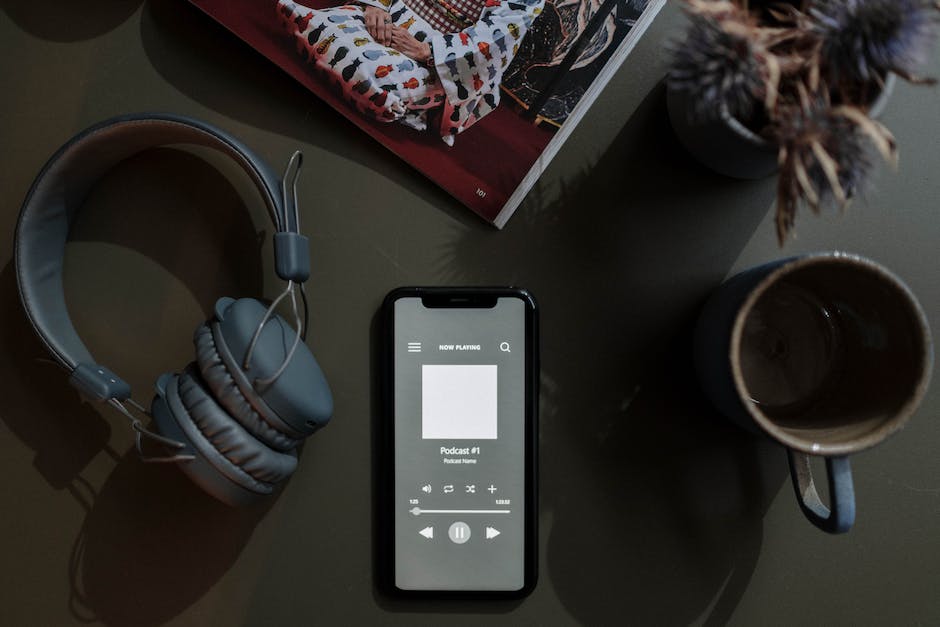
Although the average person will only consider two main factors when buying headphones, there are actually quite a few. The two main ones being sound quality and noise cancellation.
Sound quality is pretty self-explanatory. You want to buy headphones that have good, crisp sound. That happen to be tailored to your listening taste!
Noise cancellation is how effectively the headphones block out external noise. This is a pretty important feature if you are looking to spend money on headphones. How do they do this?
They are electromagnetic shields that actively cancel out external noise. How much power does the headphone require? It depends on the type of noise cancellation you choose.
Hi, I’m Dominique. I love movies and want everyone to have the best home cinema experience possible. That’s why I started 1home Theatre Projector. We help people build their home cinema system using the latest technology and news on laser tv and all-around home entertainment.
We’re a small team of movie buffs (and experts) who are passionate about giving our readers the best advice and information possible. So whether you’re just starting out or you’re looking to upgrade your home cinema system, we’ve got you covered!
Beginners Guides
How Enable Headphones Windows 10

With the release of the Windows 10 October 2018 Update, a new feature was introduced that allows you to quickly toggle your headphones on and off.
This feature is called ‘Headphones Toggle’ and is available in the Windows 10 sound settings menu. You can access these by clicking the volume button on your device or via the device menu.
You can either toggle audio off for all applications or just Spotify, for example. This is great for when you are doing a task that requires concentration and do not want any distractions.
Previously, you had to go through several steps to completely turn off your headphones. You had to go to the Sound panel, then change the default device to ‘No Device’, then restart your computer!
This new feature makes it much easier to disable your headphones on your computer! Are you a frequent headphone user? Try this feature out and see how it helps you.
Type audiosrv
Now that you have opened the Audio window, you can start to disable the headphones feature. To do this, type DisableDevice and then hit Enter. A box will appear asking you to select a device to disable.
Search for Headphones and then select them from the drop-down menu. Then hit Disable and then OK. You have successfully disabled the headphones feature on your computer!
You can close the Audio window at this point, but it is recommended to keep it open in case you need to re-enable the headphone feature or make other changes. Keep in mind that re-enabling the headphone feature is just as simple as disabling it.
Re-enabling the headphones requires only two steps: opening up the Audio window again and hitting Enable Device. Easy as that! Anyone can do it.
Click on Audiosrv

The next step is to open the Audio Service. You can do this by clicking the Computer button on the bottom left of the window, then clicking Sounds, video and speech. A new window will open, click on Playback then click on the arrow next to Speakers and select Raise volume instead. This will keep sound from playing through your headphones as well!
Now, back to the Computer window, click on Device Manager and check if there is a headphone icon with a red line through it. If there is, right-click on it and select Update device driver.
Download and install the updated driver for your headphones and try using them again! If there is no icon, try restarting your computer and re-plugging in your headphones to see if that fixes it.
Go to the start button

Next, click on the Settings option. You will find this in the Windows 10 navigation bar that includes the back button, home button, and open windows button.
A new window will open with a variety of settings to edit. One of these is the Settings page where you can edit your personal settings and adjust system settings.
In this section, there is an Audio setting tab where you can edit your headphone preferences. By clicking on this tab, you can easily enable headphones on your computer!
Under the Sound section, there is a drop-down menu that says Output Device. This is what controls what device produces sound from your computer. By default it is set to Internal Audio and this does not allow for external devices to produce sound unless you connect them.
Hold down Ctrl + Shift + B

Now, this shortcut requires you to hold down the Control, Shift, and Backspace keys at the same time.
It might seem weird at first, but this combination disables your device’s ability to detect device attachments. This includes headphones!
So, if you want to listen to music or a video with your headphones attached but do not want to hear the audio from the screen, then this is the shortcut for you!
It takes some getting used to, but after doing so once or twice you will see the benefit. You can then disconnect your headphones and continue using your computer as normal.
If you want to re-enable your device’s ability to detect device attachments, then all you have to do is hold down the Control, Shift, and Backspace keys again and dis-connect your headphones.
Click on Restart

Once in the restart menu, you will need to select some settings. First, you will need to make sure that you have your computer save your open files and close down properly.
Next, you will need to have it reboot into the default boot device. Finally, you will need to have it log you out so that it can properly restart your computer.
These are very important settings so that your computer can properly restart. Make sure to check all of these settings and that they are correct!
If you are having trouble with your headphones and audio on Windows 10, try checking if the Disable all audio components setting is enabled. If it is, try disabling it and re-plugging in your headphones to see if that fixes the problem.
This problem could be caused by a number of things, from broken wires in the headphones to a faulty device driver on your computer. Try checking out the Device Manager on your computer and see if any devices have an error symbol next to them.
Head to Settings > Devices > Headphones (or other audio device) > Toggle Connect through speakers to off

Now that this is off, your computer will not recognize the headphones as a device to output to. This is why you cannot hear anything when you have headphones on!
By toggling the Connect through speakers option to off, your computer will no longer recognize the headphones as a device. No device means no sound will play through them.
You can still use them to listen to music or whatever else you want, but you will not hear any notifications or phone calls unless you connect some other audio device. This is great for taking calls in silence!
If you would like to re-enable this feature, simply turn the Connect through speakers option back on. Then, test your phone calls and see if you can hear them through the headphones. If not, try re-connecting your audio device and testing again.
Hi, I’m Dominique. I love movies and want everyone to have the best home cinema experience possible. That’s why I started 1home Theatre Projector. We help people build their home cinema system using the latest technology and news on laser tv and all-around home entertainment.
We’re a small team of movie buffs (and experts) who are passionate about giving our readers the best advice and information possible. So whether you’re just starting out or you’re looking to upgrade your home cinema system, we’ve got you covered!
Beginners Guides
How To Sleep With Headphones

Wearing headphones to bed has become a common practice, especially among young adults. With the rise of listening to music via smartphones, people have more access to music than ever before.
Music is a great way to relax and prepare for sleep. Some studies have even shown that music can improve sleep quality!
Having headphones in your ear already makes it difficult to hear outside noise. Adding music onto that makes for a very peaceful sleep.
The problem comes when people do not realize the risks of sleeping with headphones in. The most dangerous situation is when someone passes out and does not hear any emergency calls or noises.
Aside from that, pulling the headphones out while asleep can cause other issues. If they are wrapped around the neck or wrists, they may become tight and impede blood flow. If they are on the floor, then they may cause you to wake up due to feeling off balance.
There are ways to sleep with headphones on safely! This article will go over some of those ways.
Set a loud alarm

If you have trouble falling asleep with headphones on, then try setting a loud alarm. When the alarm goes off, you can take off your headphones and fall asleep!
This is a trick that many people use to help them sleep in uncomfortable places. By sleeping in a different place, your body recognizes that it is safe to sleep and you will get a good night’s sleep.
Sleep is one of the most important things for our health. If you struggle to sleep because you cannot listen to music or podcasts before bed, then try using this tip to help you fall asleep easier.
Some people may find it difficult to coordinate their music or podcast listening time with their bedtime. If this is the case, then try going to bed a few minutes earlier or later so that you can listen to your music or podcasts before bed.
Do not use loud music

While this may seem like a good idea, music or noise in general will keep you awake. Why?
Because you have to listen to the music or noise, your brain will not process the fact that you are asleep.
The fact that you are listening to something means that you are awake-your brain knows this and does not want to stop processing that fact.
To test this theory, try going to bed without music or noise and see how well you sleep. Then try sleeping with music or noise and see how well you sleep again. You will notice a difference!
It is best to have quiet, soothing music or no music at all when going to bed. Your brain will process that you are sleeping and will let down your guard so to speak.
Keep the volume low on your headphones

Although this may seem self-explanatory, it’s important to note that the volume on your headphones should be low. As mentioned before, there’s a risk of hearing loss if the volume is too high for prolonged periods of time.
It can be difficult to determine the appropriate volume for sleeping with headphones on, but it’s best to play it safe and have a low volume.
Experts recommend setting the volume no higher than 60% of the maximum output provided by the manufacturer. This way you will still hear enough of the music or audio to relax and fall asleep, but you will not be exposing your ears to too much noise.
Keep in mind that this varies depending on the brand of headphones you use. If you are using cheaper ones that do not have high quality sound protection, then you can probably put up the volume more.
Use a soft noise generator

If you find the sound of the ocean or rain too relaxing, then try a soft noise generator. You can find these online and in the app store.
Noise generators introduce a light background noise into your environment, like the sound of rain or surf, but with an adjustable volume. They are great for sleeping as you can adjust the volume to a level that is not too loud or distracting.
They are great for sleeping as they keep your mind focused on the sound instead of thinking about everything that day. They are also very relaxing, so if you are having trouble falling asleep, try investing in one!
If you have your own music and you do not want to lose the quality by reducing the volume, then turn off all of the other sounds on your phone such as notifications and set an alarm. That way, you will still hear your music but not your phone notifications.
Use white noise

If you struggle to sleep because of noise in your environment, you can use headphones to block out other sounds. But how do you sleep with headphones on?
For one, you can choose to listen to white noise instead of music or a podcast. White noise is an almost constant sound that blocks out other noises.
It can be the sound of a fan, the rustle of a paper bag, rainfall, or even the sound of a machine turning on and off. Any of these can help you sleep!
White noise is best because it continues even when you turn off your headphones. You can also choose to listen to white noise before bed, so that it helps you get into a relaxed state before sleep.
Use a sleeping app

If you do not feel comfortable using the two methods above, there is a third option. Use a sleeping app to monitor your sleep.
Many apps offer this feature for free, and some even have it as an ad-free paid feature. By having your phone next to you while you sleep, the app will monitor how long you sleep and how many times you wake up.
This is a great way to start sleeping with headphones on, as the app will tell you how well you slept!
Some of these apps offer more features such as setting a waking alarm based on how well you slept, or tracking how long it takes you to fall asleep each night. These are nice additions if you are looking for something else to track about your sleep.
Keep the headpones on all night

While this may seem weird, it is advised to sleep with your headphones on all night. This prevents you from having to adjust them multiple times in the night, and risk waking up your partner.
Many people have reported success in just putting the headphones on before bed and leaving them on until morning when they get up. This also helps you not worry about getting tangled in wires in the middle of the night!
Some models even have a built-up battery that keeps your music playing until the next morning so you do not have to re-charge before bed.
If you must take them off due to tangling or feeling too wired, just remember to turn them off before bed! Some models have a built-up feature that turns off the music automatically after a set time which can help with this.
Be careful when sleeping with headphones
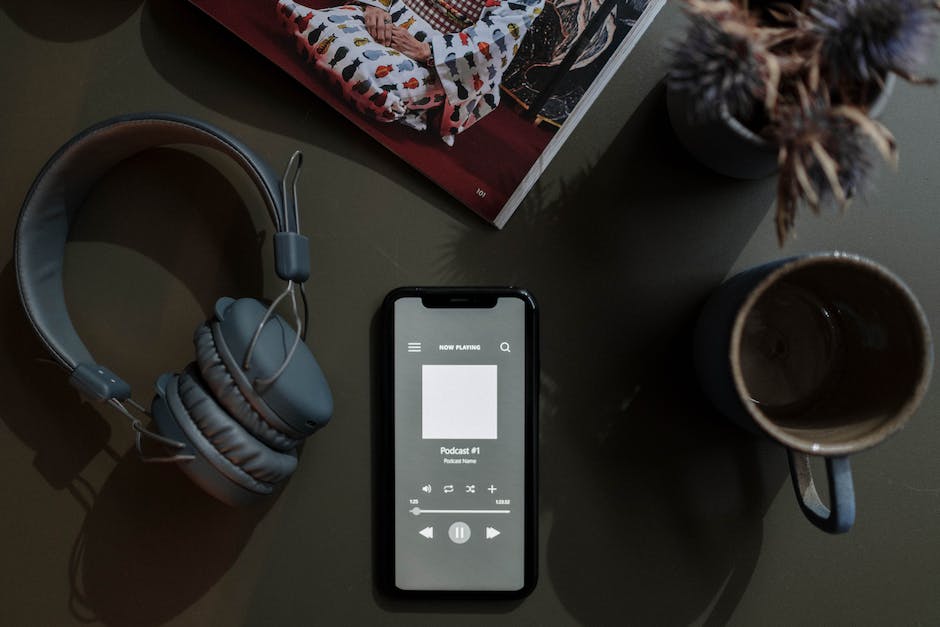
While it may be tempting to fall asleep with headphones in, or even in your ear, it is not a safe idea. If you need a little white noise to sleep, try keeping the same device on standby with a playlist instead.
Many phones have a built-in setting that turns off the screen and stops all sounds after a certain time period so you do not need to set one yourself.
Removing the ability to hear sounds completely may help you get a better night’s sleep!
Some people use music to help them relax before bed, but if that makes you feel more awake instead, try switching it up. Perhaps listen to some soothing music before bed, or just take out the headphones!
Some people find that sleeping with items in their hair can be uncomfortable, so try moving them before bed.
Hi, I’m Dominique. I love movies and want everyone to have the best home cinema experience possible. That’s why I started 1home Theatre Projector. We help people build their home cinema system using the latest technology and news on laser tv and all-around home entertainment.
We’re a small team of movie buffs (and experts) who are passionate about giving our readers the best advice and information possible. So whether you’re just starting out or you’re looking to upgrade your home cinema system, we’ve got you covered!
-

 Beginners Guides3 months ago
Beginners Guides3 months agoHow to Use a Projector & 10 Tips to Set up Your Projector Perfectly
-

 Beginners Guides3 months ago
Beginners Guides3 months agoHow to Make a Home Theatre
-

 Beginners Guides3 months ago
Beginners Guides3 months agoHow to Watch Curzon Home Cinema on My LG TV
-

 Beginners Guides3 months ago
Beginners Guides3 months agoHow Do I Connect My Home Theater to My TV Wirelessly?
-
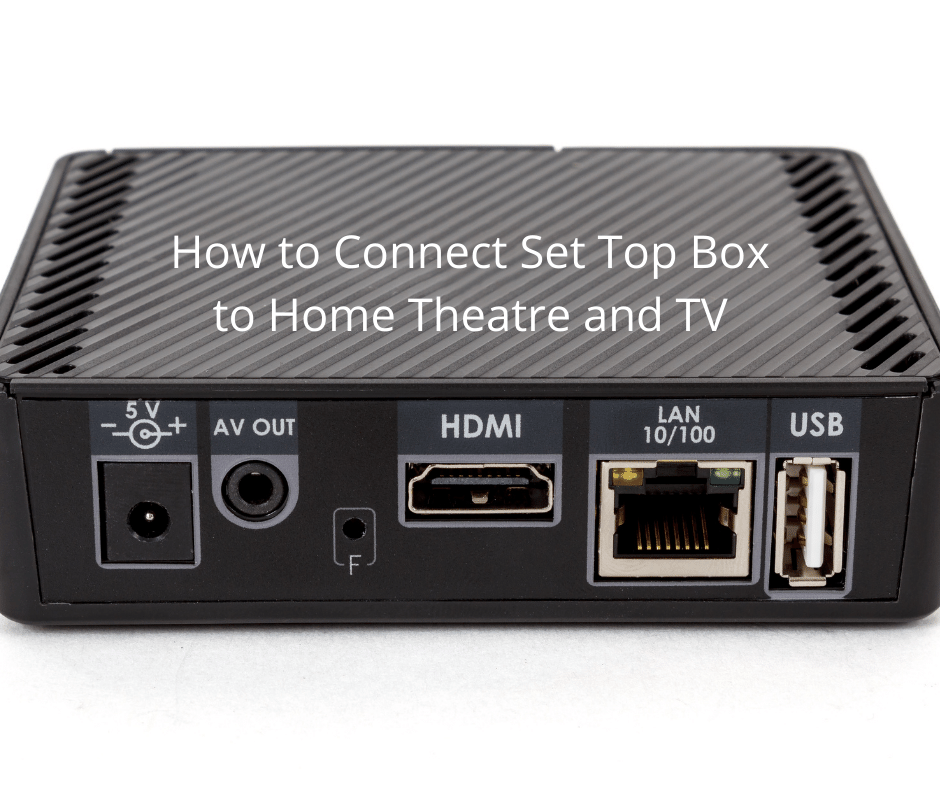
 Beginners Guides3 months ago
Beginners Guides3 months agoHow to Connect Set Top Box to Home Theatre and TV
-

 Beginners Guides3 months ago
Beginners Guides3 months agoHow to Use Surround Sound With Firestick
-
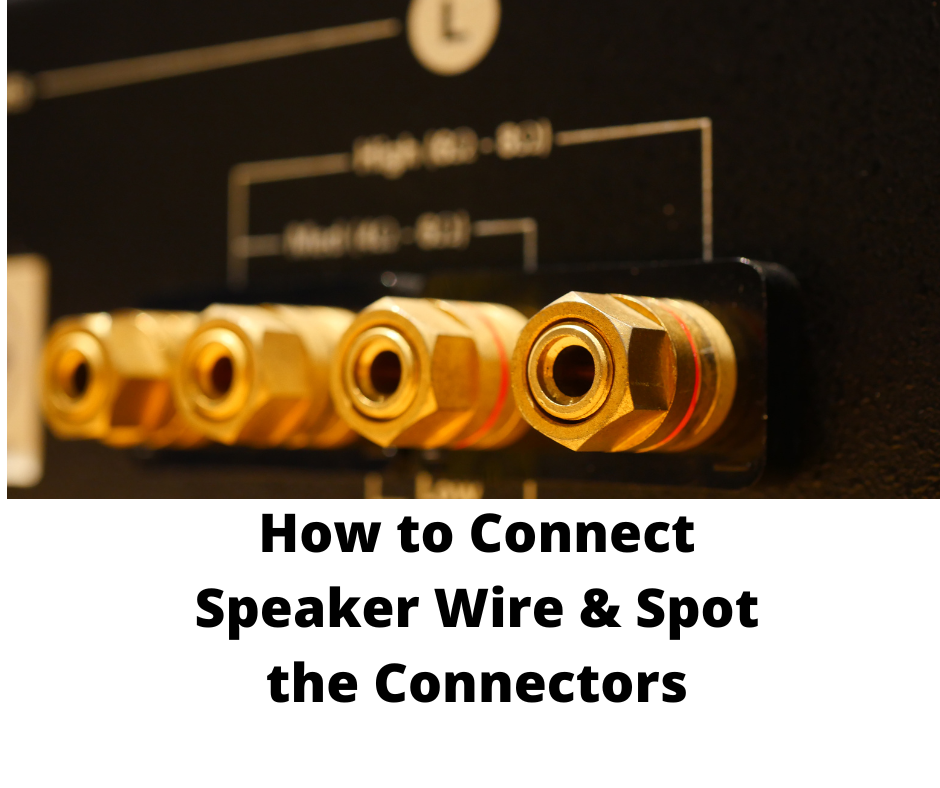
 Beginners Guides3 months ago
Beginners Guides3 months agoHow to Connect Speaker Wire & Spot the Connectors
-

 Home Cinema3 months ago
Home Cinema3 months agoUnderstanding the VGA Port: Your Guide to Display Interfaces


















